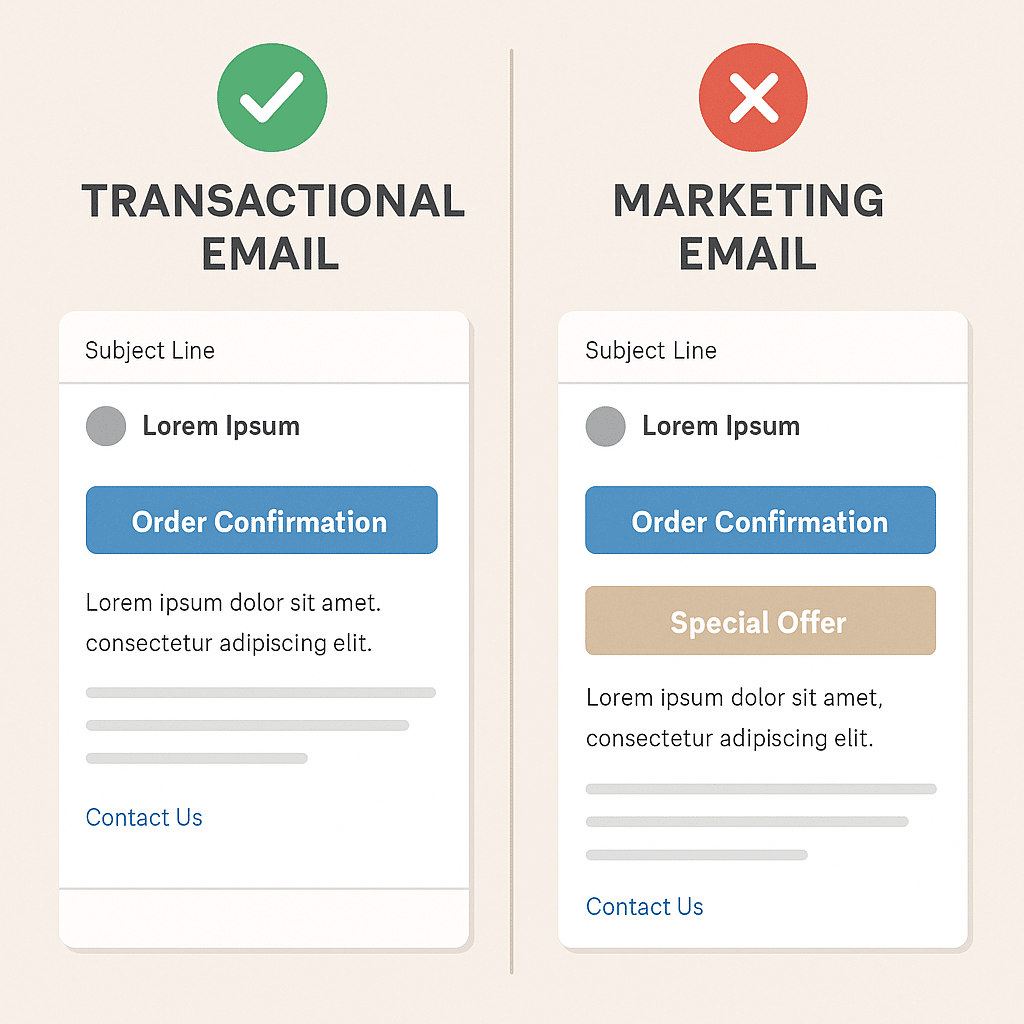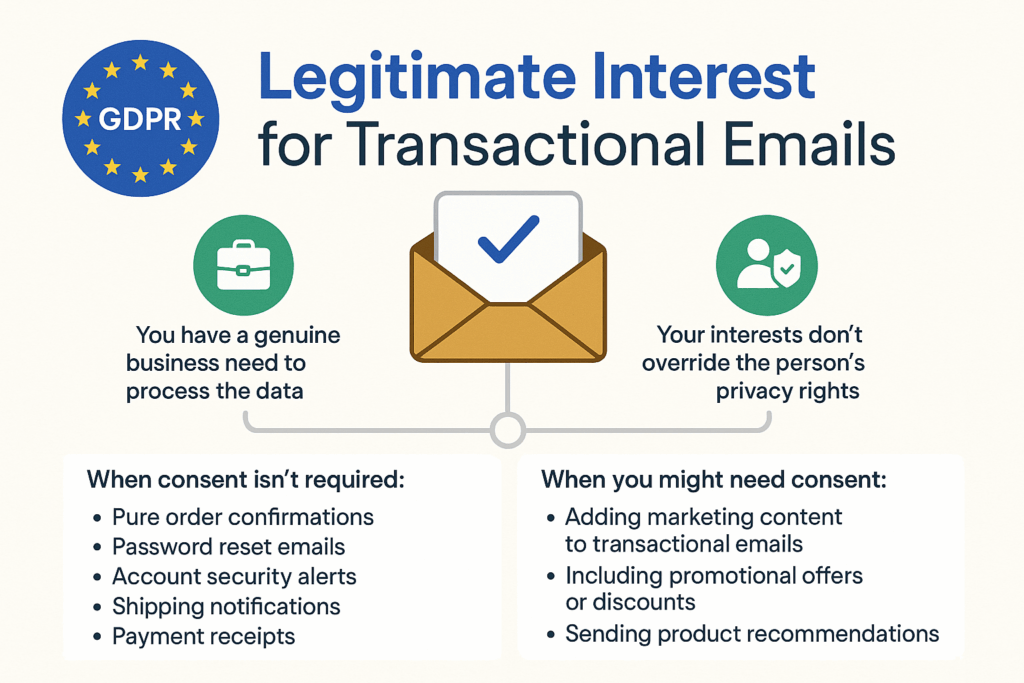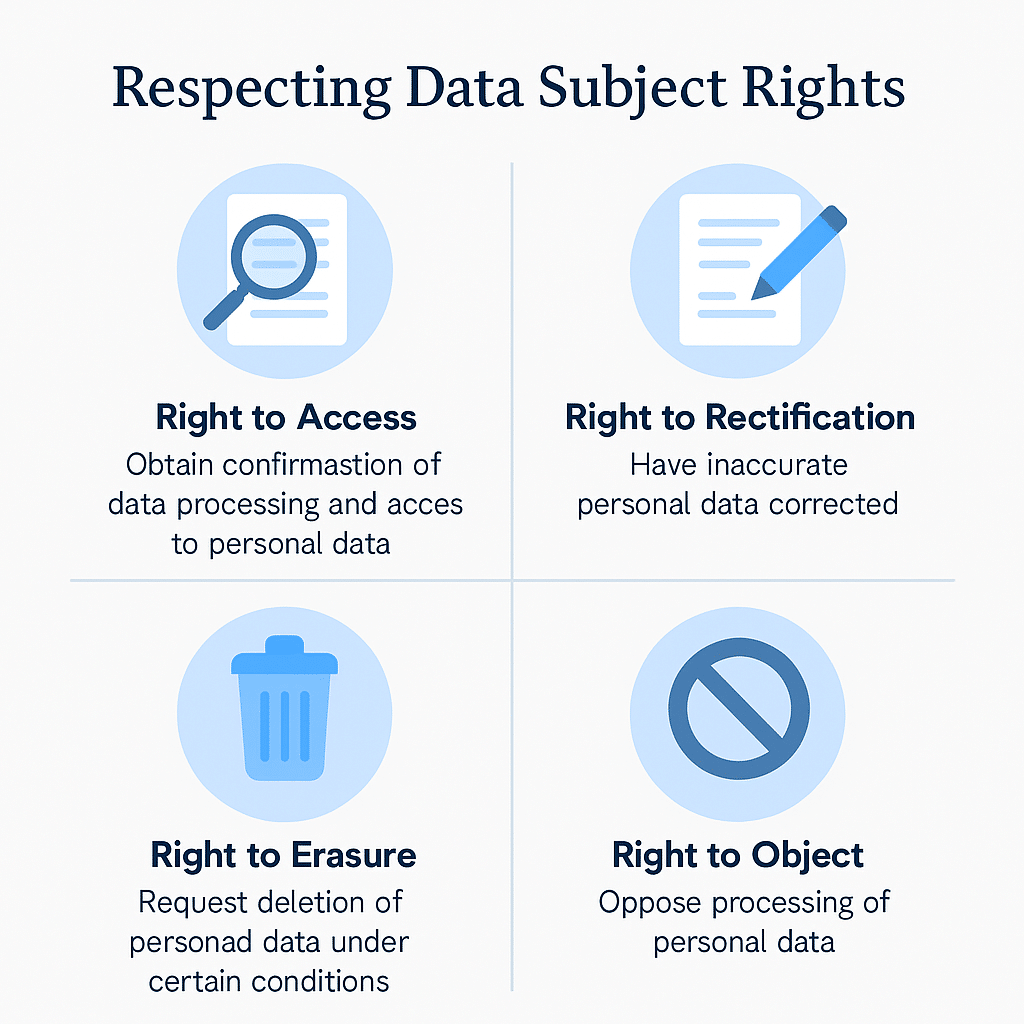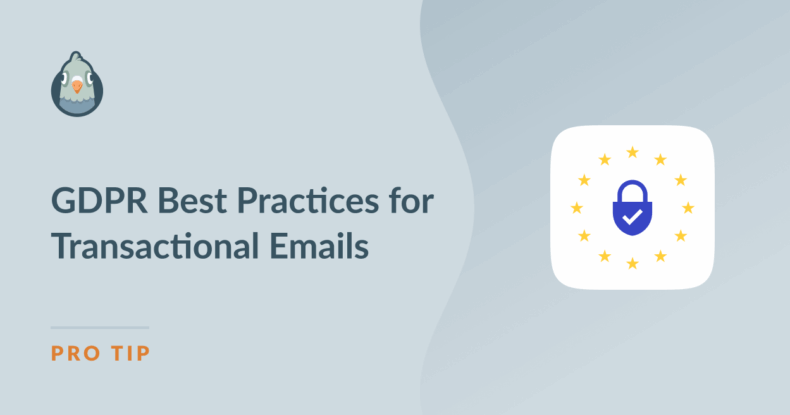AI Summary
Most WordPress site owners think GDPR is just about cookie banners and newsletter signups. But there’s another side to GDPR that gets much less attention: transactional emails.
Every day, your website probably sends dozens of automated emails. Order confirmations from WooCommerce. Password reset links. Shipping notifications. Account alerts. These aren’t marketing emails – they’re the functional messages that keep your business running.
But these emails often still process personal data, which means GDPR applies to them. The good news is they get different treatment than marketing emails. You typically don’t need consent to send them.
The not-so-good news? Add a promotional offer to an order confirmation, and you might have just changed your legal requirements entirely. I’ve seen businesses get caught off guard by this seemingly small detail.
In this guide, I’ll walk you through the GDPR rules that actually matter for transactional emails. We’ll keep it practical – no legal jargon, just what you need to know to stay compliant. I’ll also show you how WP Mail SMTP helps you manage these emails properly while avoiding common pitfalls.
- 1. What Are Transactional Emails?
- 2. Does GDPR Apply to Transactional Emails?
- 3. Lawful Basis for Sending Transactional Emails
- 4. Key GDPR Principles for Transactional Emails
- 5. Content and Formatting: Do's and Don'ts
- 6. Unsubscribe and User Rights
- 7. Documentation and Accountability
- 8. Common Mistakes to Avoid
- 9. Recent GDPR Developments & Enforcement Trends
1. What Are Transactional Emails?
Transactional emails are automatic messages that get sent when someone does something on your website. They’re the emails people expect to receive after taking an action.
Here are the most common types:
When someone buys something:
- Order confirmations
- Payment receipts
- Shipping updates
- Delivery notifications
Account stuff:
- Welcome emails after signing up
- Password reset links
- Account verification
- Login alerts
Website notifications:
- Contact form confirmations
- Subscription renewals
- Account warnings
- Security alerts
WordPress examples:
- WooCommerce order updates
- Membership site login details
- Course completion emails
- Event registration confirmations
The main thing about transactional emails is that people want them. When you buy something online, you expect a confirmation email. When you reset your password, you’re waiting for that link to arrive.
These aren’t marketing emails trying to sell you something. They’re practical emails that help people complete what they started on your site.
This is important for GDPR because these emails get treated differently than promotional ones. Since people actually need these messages, the legal requirements are different.
2. Does GDPR Apply to Transactional Emails?
Yes, GDPR absolutely applies to transactional emails. Any email that processes personal data falls under GDPR rules, and transactional emails definitely use personal data.
Think about what’s in a typical order confirmation email:
- Customer’s name and email address
- Billing and shipping addresses
- Purchase details
- Payment information
That’s all personal data under GDPR.
But here’s the key difference: transactional emails usually don’t need explicit consent like marketing emails do. Instead, they typically use “legitimate interest” as their legal basis.
Legitimate interest means you have a valid business reason for processing someone’s data, and that reason outweighs any privacy concerns. For transactional emails, this makes perfect sense.
When someone buys something from your site, you have a legitimate interest in sending them an order confirmation. They expect it, they need it, and it’s part of completing the transaction.
The same applies to password resets, account notifications, and other essential messages. These emails are necessary for your business to function and for customers to use your services properly.
However, this doesn’t mean you can do whatever you want with transactional emails. You still need to follow GDPR’s core principles about data protection, transparency, and user rights. This includes ensuring you properly authenticate your emails and deliver them securely.

The moment you add promotional content to a transactional email, you’re potentially changing the legal basis from legitimate interest to something that might require consent.
3. Lawful Basis for Sending Transactional Emails
Under GDPR, you need a lawful basis to process personal data. For transactional emails, that basis is almost always “legitimate interest.”
Legitimate interest works when three conditions are met:
- You have a genuine business need to process the data
- The processing is necessary to meet that need
- Your interests don’t override the person’s privacy rights
Transactional emails tick all these boxes. You need to send order confirmations to run your business. Customers expect these emails. And there’s no real privacy concern since people want to receive them.
When consent isn’t required:
- Pure order confirmations
- Password reset emails
- Account security alerts
- Shipping notifications
- Payment receipts
When you might need consent:
- Adding marketing content to transactional emails
- Including promotional offers or discounts
- Sending product recommendations
- Adding newsletter signup links
The grey area is where businesses get into trouble. That innocent “You might also like…” section in your order confirmation? That could push your email into marketing territory and change your legal requirements.
Some businesses try to bundle everything together. They’ll add promotional content to transactional emails thinking it’s more convenient. But this approach can create compliance headaches.

The safest approach is to keep transactional emails strictly transactional. If you want to send marketing content, use separate emails with proper consent mechanisms.
4. Key GDPR Principles for Transactional Emails
Even though transactional emails don’t need consent, they still need to follow GDPR’s core principles. Here’s what matters most:
Lawfulness, Fairness, and Transparency
Be upfront about why you’re sending the email and what you’re doing with customer data. Use clear subject lines that explain the email’s purpose, make it obvious who the email is from, and include a link to your privacy policy in every email. Your privacy policy should explain how you use customer data.
Purpose Limitation
Only include content that’s directly related to the specific transaction or action that triggered the email. Order confirmations should contain order details. Password reset emails should contain reset instructions. Account notifications should focus on account changes.
Avoid adding product recommendations to order confirmations, marketing offers to security alerts, or newsletter content to transactional messages. Keep each email focused on its specific purpose.
Data Minimization
Only collect and include the personal data you actually need for that specific email. Don’t include unnecessary personal details in email content. Only collect data fields required for the transaction, and remove data you no longer need for business purposes.
Security
Protect customer data both when you store it and when you send emails. Use secure email transmission through TLS encryption, regularly update your email systems and plugins, and monitor for data breaches or security issues. Limit access to customer data within your team.
Proper email authentication through SPF, DKIM, and DMARC records also plays a crucial role in GDPR compliance. These protocols help ensure email integrity and prevent unauthorized use of your domain for sending emails.
WP Mail SMTP improves security by sending your emails through reliable, encrypted channels instead of your server’s potentially insecure mail function. It also supports proper email authentication protocols and provides bounce handling to keep your email lists clean and accurate.
You can see more information in our documentation on how to be GDPR compliant within WP Mail SMTP.
5. Content and Formatting: Do’s and Don’ts
Getting your transactional email content right is crucial for GDPR compliance. Here’s what to do and what to avoid:
| ✅ Do | ❌ Don’t |
| Use clear subject lines and sender info | Add promotional offers or external marketing links |
| Keep emails concise and relevant | Bundle newsletters or special offers in transactional emails |
| Provide privacy policy link | Use confusing or misleading messaging |
| Use standard, well-tested templates | Frequently alter templates in ways that could confuse users |
| Ensure proper email authentication (SPF, DKIM) | Send from unverified or suspicious domains |
| Monitor email deliverability and bounces | Ignore failed deliveries or bounce notifications |
The key is keeping your transactional emails focused on their purpose. When someone gets an order confirmation, they want to see their order details, shipping information, and maybe your contact details if they have questions.
They don’t want to see your latest product launch, a discount code for their next purchase, or an invitation to follow you on social media. Adding that kind of content changes the nature of the email and potentially your legal obligations.
Stick to clean, simple templates that clearly communicate the necessary information. Your customers will appreciate the clarity, and you’ll stay on the right side of GDPR requirements.
6. Unsubscribe and User Rights
Unsubscribe requirements for transactional emails are different from marketing emails. Here’s what you need to know:
When Unsubscribe Isn’t Required
Pure transactional emails don’t need unsubscribe links. If someone buys something from your store, they can’t “unsubscribe” from getting their order confirmation. That would defeat the purpose of the transaction.
The same applies to password resets, security alerts, and other essential notifications. These emails are necessary for your service to function properly.
When You Do Need Unsubscribe Options
The moment you add any marketing content to a transactional email, you need to provide an unsubscribe option. This includes product recommendations, promotional offers, or even links to your blog or social media.
If your “order confirmation” email includes a section about new products, you’ve just created a mixed-purpose email that needs an unsubscribe link.
Respecting Data Subject Rights
Under GDPR, people have several rights regarding their personal data. For transactional emails, the most relevant ones are:
Right to access: People can ask what data you have about them and how you use it. Make sure your privacy policy clearly explains your email practices.
Right to rectification: If someone’s email address or other details are wrong, they should be able to update them easily through their account or by contacting you. Proper email infrastructure helps here – bounce notifications alert you when emails can’t reach outdated addresses.
Right to erasure (right to be forgotten): After a transaction is complete and any legal retention periods have passed, people can ask you to delete their data. Explain your data retention policies in your privacy policy. WP Mail SMTP’s logging features help you track when you sent and received emails, making it easier to manage data retention periods.
Right to object: While people can’t object to necessary transactional emails, they can object to any additional processing like marketing content.

The key is being transparent about these rights and making it easy for people to exercise them when appropriate.
7. Documentation and Accountability
GDPR requires businesses to demonstrate compliance, not just achieve it. This means keeping proper records of your email practices and decision-making processes.
Document Your Legitimate Interest Assessments
For each type of transactional email you send, document why you believe legitimate interest applies. This doesn’t need to be complicated, but you should be able to explain what business need the email serves, why the email is necessary to meet that need, and how you’ve balanced your business interests against customer privacy.
For example, your assessment for order confirmation emails might note that customers expect these emails to complete their purchase, the emails contain only transaction-related information, and customers would be confused or concerned if they didn’t receive them.
Regular Auditing
Review your email processes regularly to ensure they’re still compliant. Check that your transactional emails haven’t drifted into marketing territory over time. It’s easy for well-meaning team members to add “helpful” promotional content without realizing the compliance implications.
Set up a quarterly email audit where you check your email templates, privacy policies, and data handling processes. Look for any changes that might affect your GDPR compliance.
Staff Training
Make sure everyone who works on your email systems understands the basics of GDPR compliance for transactional emails. This includes developers, marketers, customer service staff, and anyone else who might modify email templates or processes.
Train your team to recognize when content might push a transactional email into marketing territory. A simple rule of thumb: if the content isn’t directly related to the specific transaction or action that triggered the email, it probably doesn’t belong there.
WP Mail SMTP improves accountability by providing detailed email logs and delivery reports, making it easier to track and document your email practices. These logs include delivery status, bounce information, and sending history – all valuable for compliance audits and demonstrating your adherence to GDPR principles.
8. Common Mistakes to Avoid
Learning from other businesses’ mistakes is easier than making your own. Here are the most common GDPR compliance errors with transactional emails:
Mixing Promotional and Transactional Content
This is the biggest mistake businesses make, and I see it constantly. They’ll add product recommendations to order confirmations, include discount codes in password reset emails, or bundle newsletter signups with account notifications.
Each piece of promotional content you add to a transactional email moves you further into marketing territory. What started as a legitimate interest email might end up requiring consent instead.
Using Transactional Email Data for Other Purposes
Just because someone gave you their email address to complete a purchase doesn’t mean you can use it for anything else. You can’t automatically add them to your newsletter, send them promotional emails, or share their data with third parties without proper consent.
Keep your purposes separate. Transactional data should only be used for transactional purposes unless you have specific consent for other uses.
Lack of Transparency About Data Processing
Many businesses forget to clearly explain how they handle email data. Your privacy policy should specifically mention transactional emails, what data you collect, how long you keep it, and what legal basis you use.
Don’t make customers hunt for this information. Include privacy policy links in your emails and make sure the policy is written in plain language.
Failing to Consider User Rights
Some businesses assume that because transactional emails don’t need consent, they don’t need to worry about user rights at all. But people still have rights under GDPR, including the right to know how their data is used and the right to have incorrect data corrected.
Make it easy for customers to update their information, understand your data practices, and contact you when they have concerns about how you handle their data.
Poor Email Infrastructure Management
Using unreliable email systems creates compliance issues. Failed deliveries, bounced emails, and poor authentication lead to data accuracy problems and security vulnerabilities. If your emails don’t reach customers reliably, you’re not fulfilling your legitimate business purposes effectively.
If you’re using WordPress’s default mail function, consider switching to WP Mail SMTP. It provides better security, deliverability, and compliance features including:
- Detailed email logging for compliance documentation
- Secure SMTP connections with TLS encryption
- Email authentication (SPF, DKIM, DMARC) support
- Professional bounce handling and failed delivery tracking
- Integration with reliable email service providers
- Comprehensive delivery reports for audit purposes
Configure your email settings to use secure protocols and authentication methods. This ensures your transactional emails reach customers reliably and securely, which is essential for GDPR compliance.
9. Recent GDPR Developments & Enforcement Trends
GDPR enforcement is getting more sophisticated, and regulators are paying closer attention to email practices. Here’s what I’m seeing in the enforcement landscape:
Crackdown on Mixed-Purpose Emails
Data protection authorities across Europe have issued several high-profile fines for businesses that blur the lines between transactional and marketing emails. The pattern is clear: regulators are specifically targeting companies that “smuggle” promotional content into transactional messages.
One common enforcement action involves eCommerce businesses that include product recommendations or discount codes in order confirmation emails without proper consent mechanisms. These cases show that even small additions of marketing content can trigger significant penalties.
Third-Party Email Service Requirements
There’s been increased scrutiny of how businesses handle data when using third-party email services. Regulators want to see clear data processing agreements and proper safeguards when customer data is shared with email service providers.
This affects WordPress users who rely on external SMTP services or email marketing platforms. Make sure any third-party service you use offers appropriate GDPR protections. WP Mail SMTP integrates with major email providers that offer GDPR-compliant services and proper data processing agreements.
Updated Privacy Policy Standards
Recent guidance from EU regulators emphasizes the need for more specific information about email practices in privacy policies. Generic statements about “email communications” are no longer sufficient.
Regulators want to see clear distinctions between different types of emails, specific retention periods, and detailed explanations of lawful bases for processing.
Focus on Legitimate Interest Documentation
Enforcement actions increasingly focus on whether businesses can properly justify their legitimate interest claims. Regulators are asking for detailed documentation showing how businesses balanced their interests against user privacy.
This means your legitimate interest assessments for transactional emails need to be thorough and well-documented, not just afterthoughts.
For WordPress users, tools like WP Mail SMTP help you stay compliant by providing secure email delivery, detailed logging, and better control over your email infrastructure. Features like comprehensive email logs, delivery tracking, and integration with GDPR-compliant email providers make it easier to demonstrate compliance and manage your email practices effectively.
But remember that technology is just one part of the compliance picture. Clear policies, proper documentation, and team training are equally important.
Next, Make Sure Your Emails Are EAA Compliant
GDPR isn’t the only regulation you need to consider when it comes to your emails. Take a look at our email compliance guide for information about CAN-SPAM and other regulations, and follow our detailed guide to ensuring your emails are compliant with the latest European Accessibility Act.
Ready to fix your emails? Get started today with the best WordPress SMTP plugin. If you don’t have the time to fix your emails, you can get full White Glove Setup assistance as an extra purchase, and there’s a 14-day money-back guarantee for all paid plans.
If this article helped you out, please follow us on Facebook and Twitter for more WordPress tips and tutorials.

